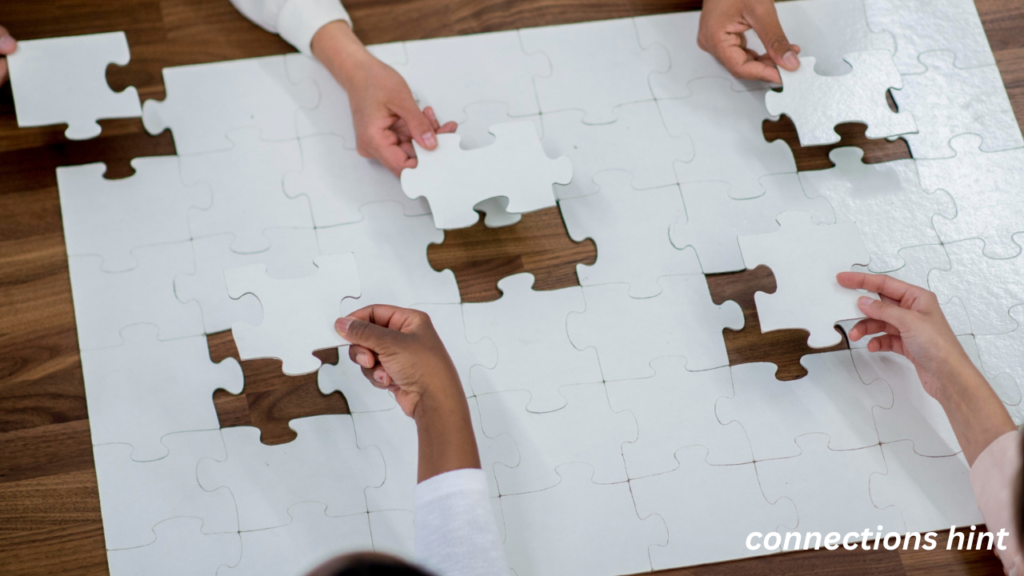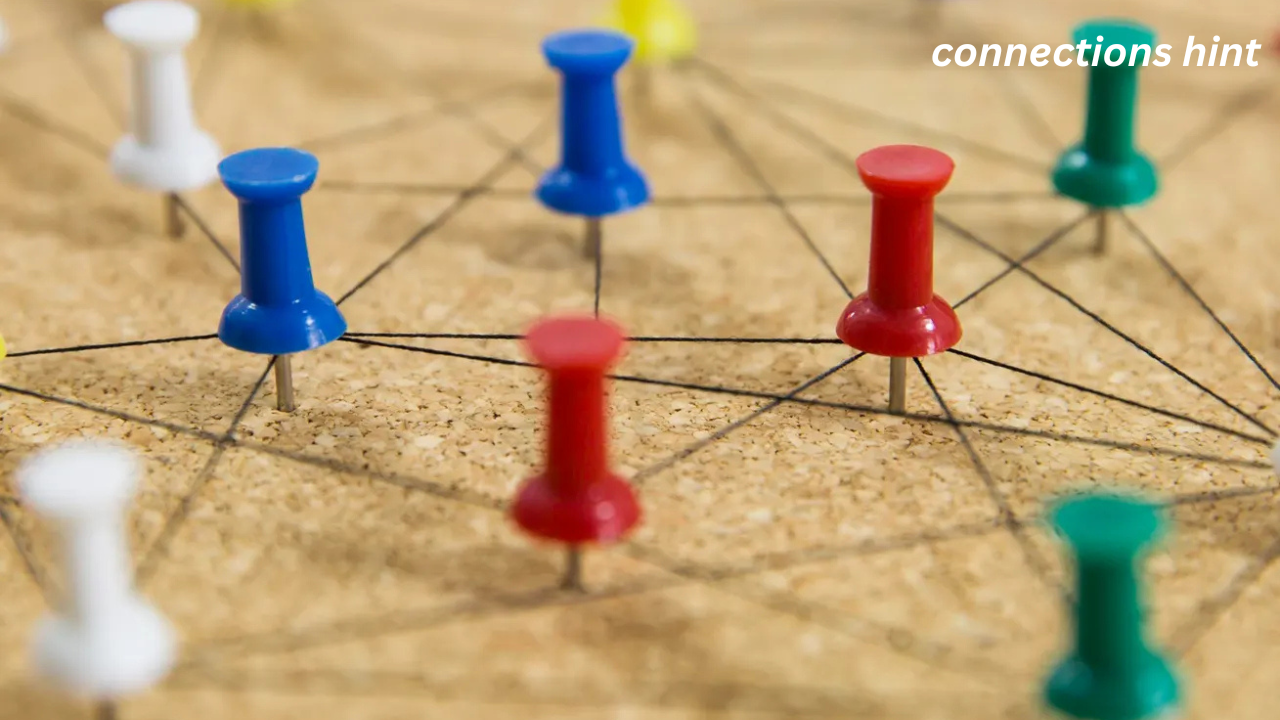In today’s fast-paced world, the ability to forge meaningful connections with others is more crucial than ever. Whether in your personal life, connections hint, or social interactions, forming connections is the key to building lasting relationships and achieving success. But how can you tell when the time is right to form these bonds, and what makes a connection truly meaningful? Understanding the concept of “connections hint” is the first step to mastering human interaction. This guide dives into the importance of connections, the science behind them, and how to read and improve connection hints for more impactful relationships.
The Importance of Connections in Everyday Life
The concept of “connections” refers to the relationships and bonds formed between individuals, whether emotional, intellectual, or social. In a world where communication is often digital, many people find it increasingly difficult to make authentic connections. Yet, human connection remains at the heart of meaningful interactions, impacting everything from our personal lives to our careers. A “connections hint” serves as the subtle cues or signals that connections hint someone is open to engaging or when a bond is forming. Recognizing these cues can help you navigate conversations, strengthen your ties with others, and increase your chances of building long-term relationships.
Understanding how to detect these hints can also be incredibly valuable in your professional life. Whether you’re networking or working in teams, connections hint with colleagues, clients, or prospects on a deeper level can significantly impact your success. Emotional intelligence, empathy, and communication skills all play a role in recognizing and interpreting these hints. Mastering this skill allows you to foster trust, cooperation, and rapport more effectively.
The Science Behind Making Connections
When we talk about making connections, it’s not just a social skill—it’s deeply rooted in the psychology and biology of human behavior. Our brains are wired for social interaction, and forming bonds with others triggers the release of certain hormones like connections hint promotes feelings of trust and bonding. This “bonding hormone” is why we often feel good when we connect with others, whether it’s a close friend, a colleague, or even a stranger in a meaningful conversation.
In addition to hormonal responses, body language plays a crucial role in forming connections. Studies have shown that non-verbal cues, such as facial expressions, posture, and eye contact, convey emotions and intentions far more than spoken words. In fact, it’s connections hint about 70% of communication is non-verbal. This means that learning to read body language is essential in detecting the subtle “hints” that people are interested in connecting with you. Recognizing these non-verbal cues can help you gauge when someone is open to a deeper conversation, strengthening the overall interaction.
Moreover, our ability to empathize with others is key to forming stronger connections. Empathy enables us to understand and share the feelings of others, connections hint adept at recognizing their emotional state and responding appropriately. Whether it’s through comforting words, a warm gesture, or simply listening, empathetic responses create bonds that help foster trust and mutual respect in any relationship.
Types of Connections Hint

Emotional Connections
Emotional connections are the foundation of many deep and meaningful relationships. These connections are formed when individuals share their vulnerabilities, concerns, and joys. Emotional connections can arise between family members, friends, romantic partners, or even colleagues who are willing to engage on a personal level. The key to establishing emotional bonds lies in sharing experiences, showing vulnerability, and offering support during times of need.
Recognizing emotional connection hints involves noticing when someone opens up about their feelings or when they express a desire for support. This can manifest as a person sharing personal stories, asking for advice, or revealing concerns about their well-being. These cues indicate that the individual trusts you and is open to forming a deeper emotional connection. By responding with empathy, understanding, and care, you create an environment where these emotional connections can grow stronger.
Intellectual Connections
Intellectual connections are formed when individuals bond over shared knowledge, ideas, or intellectual interests. These connections tend to occur in environments where the exchange of thoughts and ideas is encouraged—such as academic settings, professional workplaces, or hobby groups. People who connect on an intellectual level enjoy stimulating conversations, problem-solving, and brainstorming, leading to a sense of mutual respect for each other’s intelligence and insights.
Recognizing intellectual connection hints often involves paying attention to how a person reacts to your ideas or contributions. Are they engaged and interested, asking thoughtful questions or offering constructive feedback? These are clear signs that an intellectual bond is forming. By continuing to engage in stimulating discussions and respecting the other person’s viewpoints, you can further strengthen this type of connection.
Social Connections
Social connections are perhaps the most common type of relationship, forming between individuals who interact in group settings or during casual encounters. These can include connections made through friends, acquaintances, coworkers, or community events. While social connections may start as casual or superficial, they can grow into deeper, more meaningful relationships over time if nurtured.
The hints in social interactions are often more subtle. A person who invites you to social events, includes you in group conversations, or expresses interest in spending time with you outside of typical social settings is signaling a desire to connect. To nurture these relationships, engage in conversations, show interest in others, and participate actively in group activities. Over time, these social bonds can evolve into closer friendships or professional networks.
Professional Connections
Professional connections are vital for career growth and success. Whether you’re looking for career opportunities, mentorship, or collaborations, building a strong network of professional relationships is crucial. Recognizing professional connection hints involves looking for signals of mutual professional respect, such as colleagues offering advice, collaboration opportunities, or expressions of interest in your work.
To build professional connections, focus on developing strong communication skills, demonstrating expertise in your field, and showing genuine interest in others’ work. By offering help and making an effort to understand the professional goals of those around you, you lay the groundwork for lasting, mutually beneficial connections.
Mastering the Art of Reading Connections Hints
Verbal Clues
When it comes to building connections, the way people speak can reveal a lot about their willingness to connect. Verbal clues include the tone of voice, the use of certain words, and the depth of the conversation. For instance, when someone asks open-ended questions or engages in a deeper discussion, it’s a clear indication that they’re interested in forming a stronger bond.
The words people choose often reflect their emotional state and level of comfort. If someone uses phrases like “I trust you,” “I feel comfortable with you,” or “I appreciate your perspective,” these are all verbal hints that a deeper connection may be forming. Listening attentively to these verbal cues and reciprocating with your own meaningful responses can enhance the connection.
Non-Verbal Cues
Non-verbal cues such as facial expressions, body posture, and gestures can provide crucial insights into whether someone is open to connection. For instance, when people are engaged in a conversation, they may maintain eye contact, lean in slightly, or nod to show understanding. These cues are all signs that they are actively participating in the interaction and are open to deepening the connection.
Conversely, crossed arms, lack of eye contact, or a withdrawn posture may indicate discomfort or disinterest. By paying attention to these physical signals, you can adjust your approach to better engage the other person and create a more comfortable space for connection.
Contextual Clues
In addition to verbal and non-verbal cues, the context in which an interaction takes place can also provide valuable hints about someone’s openness to connection. Are they in a professional setting or a more casual environment? Are they speaking about personal experiences, or is the conversation strictly business? Understanding the context can help you gauge the right time to deepen the connection.
For instance, a colleague who shares a personal anecdote during a lunch break may be subtly signaling that they are interested in connecting on a more personal level. Recognizing these contextual clues and responding appropriately can lead to stronger, more meaningful interactions.
Conclusion
Mastering the art of recognizing and building connections is essential for personal growth, professional success, and forming lasting relationships. By understanding the different types of connections and learning how to read the hints that others give, you can strengthen your ability to engage with people on a deeper level. Whether through emotional, intellectual, social, or professional bonds, connections are the foundation of all meaningful human interaction. Embrace the power of connection, and watch your relationships thrive.
FAQs
What are connection hints?
Connection hints are subtle cues or signals that indicate when someone is open to forming a deeper bond or relationship. These hints can be verbal, non-verbal, or contextual.
How can I recognize a good connection hint in a conversation?
Look for signs of engagement, such as thoughtful questions, active listening, and non-verbal cues like eye contact or leaning in. These signals indicate that the person is interested in connecting.
Are emotional connections more important than intellectual ones?
Both emotional and intellectual connections are important, but the significance depends on the type of relationship you want to build. Emotional connections foster trust and intimacy, while intellectual connections promote mutual respect and understanding.
How do I improve my professional networking skills using connection hints?
Focus on active listening, showing interest in others’ work, and providing value to your network. Recognizing professional connection hints, such as collaborative opportunities or expressions of respect, can help you build stronger professional relationships.
What are the common mistakes people make when trying to build connections?
Common mistakes include being overly eager, not listening attentively, or failing to recognize non-verbal cues. To build genuine connections, it’s important to be patient and mindful of others’ signals.
You May Also Read: https://ventsworlds.com/heart-copy-and-paste/

